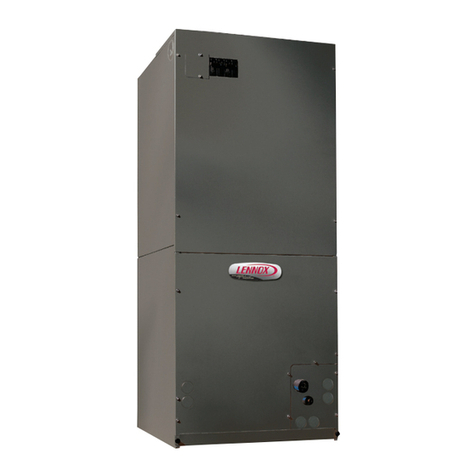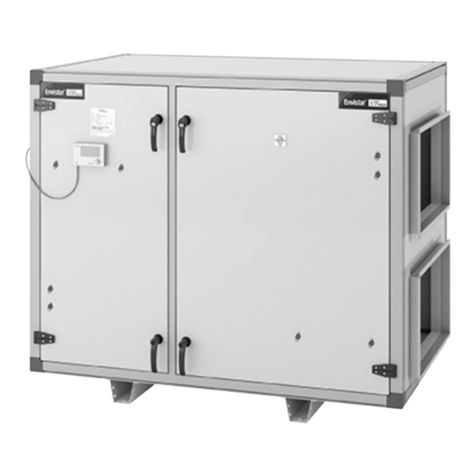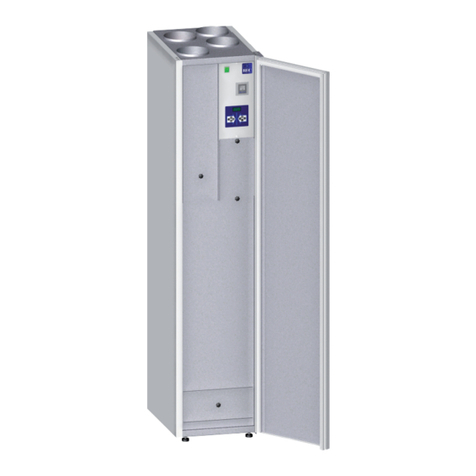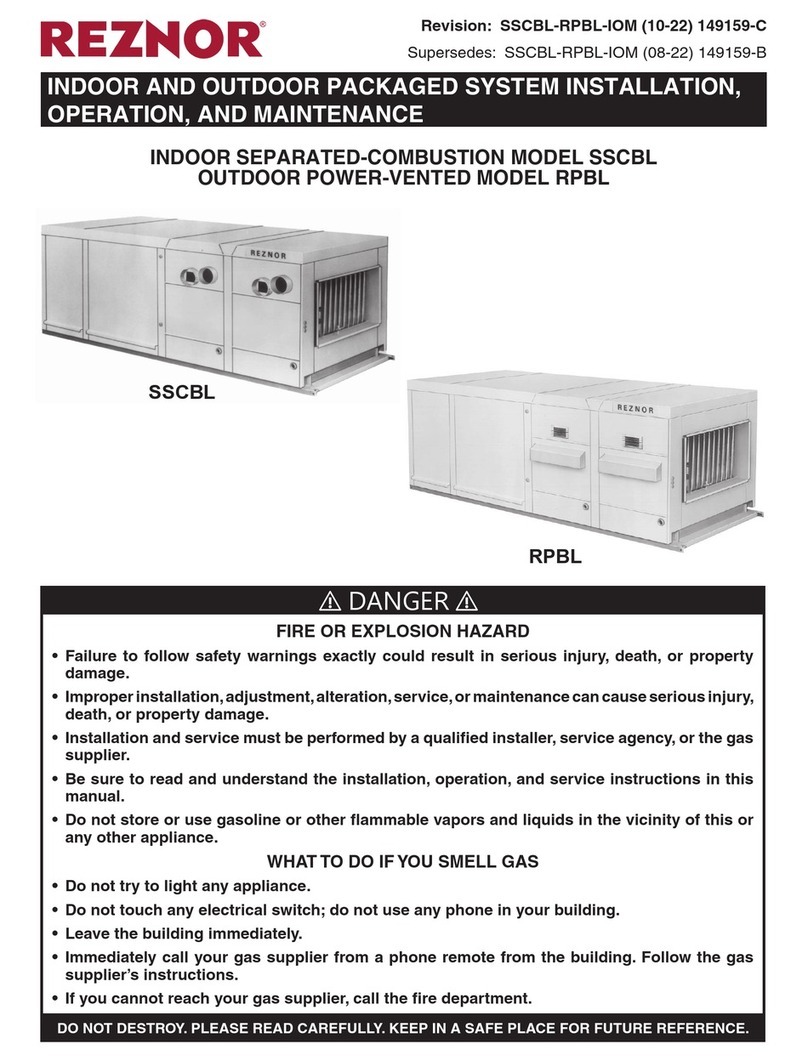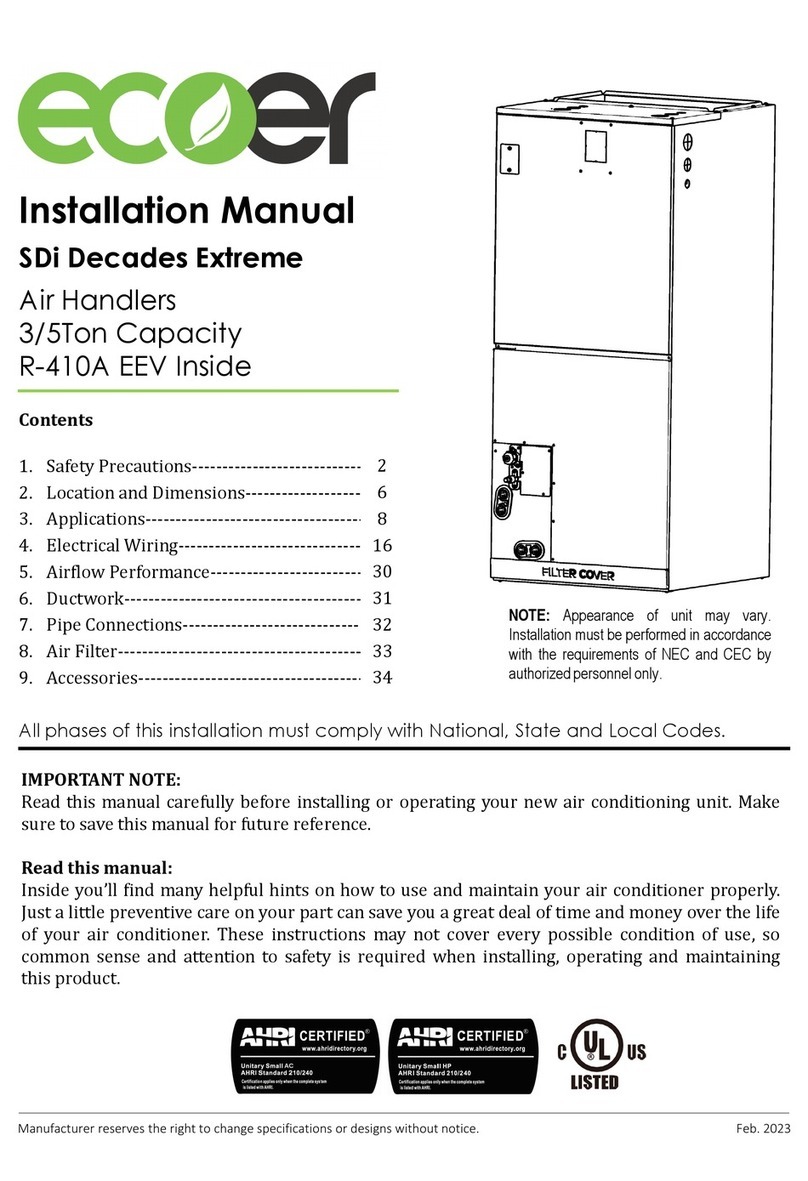
Manufacturer reserves the right to change specifications or designs without notice.
Air Handler Unit Installation Instruction
1. Safety
Read the following safety instructions before installing the unit or doing service work.
WARNING may cause personal death or seriousinjury.
CAUTION may lead to injury or structural damage under some conditions.
WARNING
Disconnect all power to unit before installing or servicing. More than one disconnecting switch may be
required to de-energize the equipment. Hazardous voltage can cause server personal injury or death.
Installation and maintenance must be performed by authorized personnel only.
Consumer service is recommended only for filter cleaning/replacement. Never operate the unit with the
access panels removed.
Failure to inspect pipes or use proper service tools may result in equipment damage or personal injury.
if using existing refrigerant pipes, make sure that all joints are brazed, not soldered.
The unit must be permanently grounded.
Failure to do so can result in electrical shock causing personal injury or death.
PROPOSITION 65: This appliance contains fiberglass insulation. Respirable particles of fiberglass are
known to State of California to cause cancer. All manufacturer products have to meet current federal
OSHA Guidelines for safety.
California Proposition 65 warnings are required for certain products that are not covered by the OSHA
standards. It requires warnings for products sold in California that contain or produce any of over 600
listed chemicals known to the State of California to cause cancer or birth defects such as fiberglass
insulation, lead in brass, and combustion products from natural gas.
All “new equipment” shipped for sale in California will have labels stating that the product contains and
/or produces Proposition 65 chemicals. Although we have not changed our processes, having the same
label on all our produced facilitates manufacturing and shipping. We cannot always know “when or if”
products will be sold in the California market. You may receive inquiries from customers about chemicals
found in, or produced by, some of our heating and air-conditioning equipment, or found in natural gas
used with some of our products. Listed below are those chemicals and substances commonly associated
with similar equipment in our industry and other manufacturers.
• Glass Wool (Fiberglass) Insulation
• Carbon Monoxide (CO).
• Formaldehyde
• Benzene
More details are available at the websites for OSHA (Occupational Safety and Health Administration), at
www.osha.gov and the State of California’s OEHHA (Office of Environmental Health Hazard Assessment)
at www.oehha.org. Consumer education is important since the chemicals and substances on the list are
found in our daily lives. Most consumers are aware that products present safety and health risks, when
improperly used, handled and maintained.

























